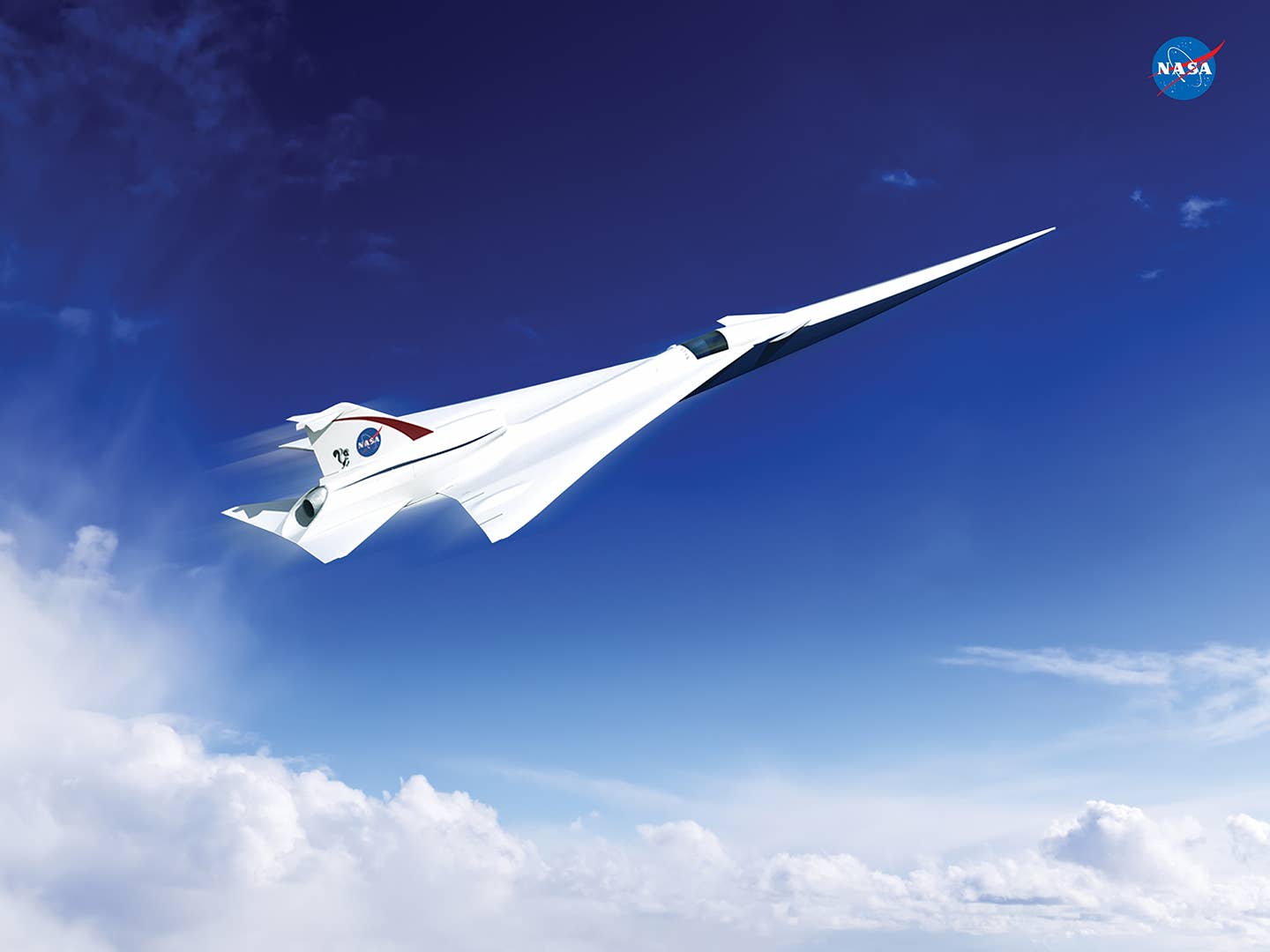
NASA announced plans for a new X-plane. NASA
Watch out, Aerion. There may be some competition in the development of supersonic passenger airplanes in the not so distant future. NASA announced yesterday that it has awarded a $20 million contract to Lockheed Martin for the primary design of a commercially viable supersonic flight demonstrator aircraft. The ultimate goal is to produce a supersonic aircraft with a “low boom,” using what NASA has termed Quiet Supersonic Technology (QueSST). The FAA currently prohibits supersonic civilian flights over land due to the extreme noise produced by supersonic booms.
With the help of subcontractors GE Aviation and Tri Models Inc., Lockheed Martin will develop a preliminary aircraft design, with specs, and provide analytical and wind-tunnel validation. The contract also includes a study of the public’s response to quieter boom technology. A detailed design contract for the aircraft will be up for future competition.
The project is the first in a series of planned X-planes, continuing the legacy of the first supersonic aircraft – the Bell X-1, in NASA’s New Aviation Horizons initiative. With its new X-plane designs, NASA hopes to make future flight greener, safer, quieter and faster.
“Developing, building and flight testing a quiet supersonic X-plane is the next logical step in our path to enabling the industry’s decision to open supersonic travel for the flying public,” said Jaiwon Shin, associate administrator for NASA’s Aeronautic Research Mission.

Sign-up for newsletters & special offers!
Get the latest FLYING stories & special offers delivered directly to your inbox






